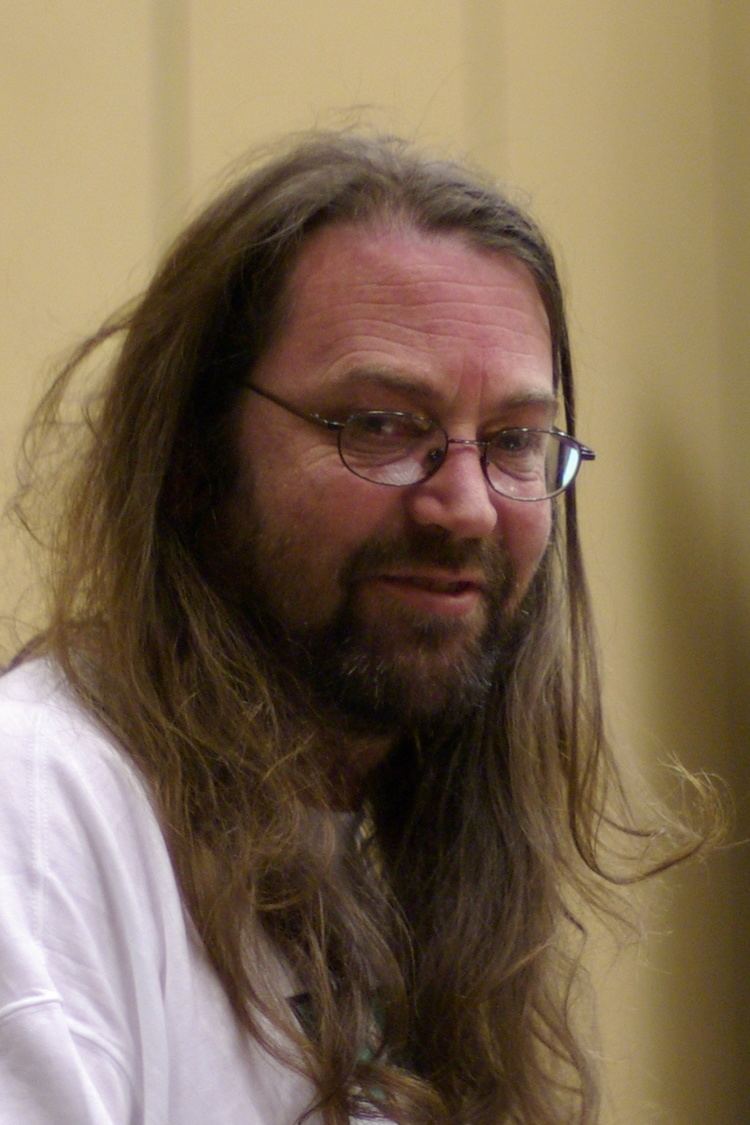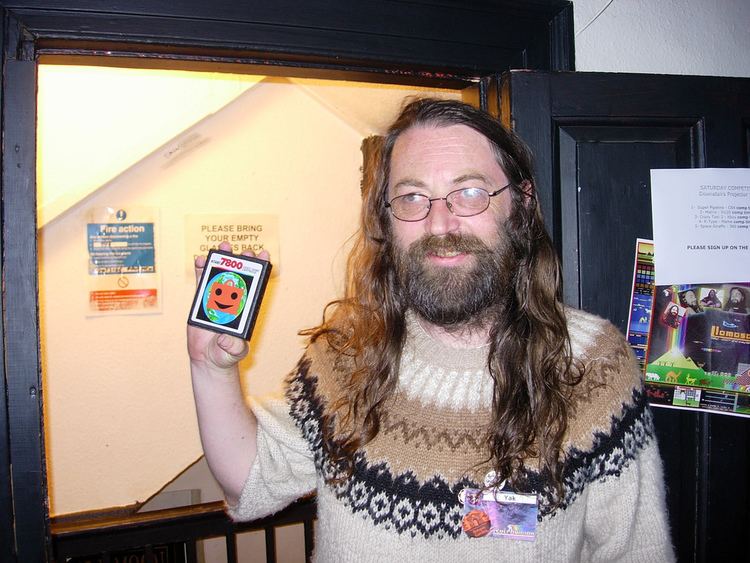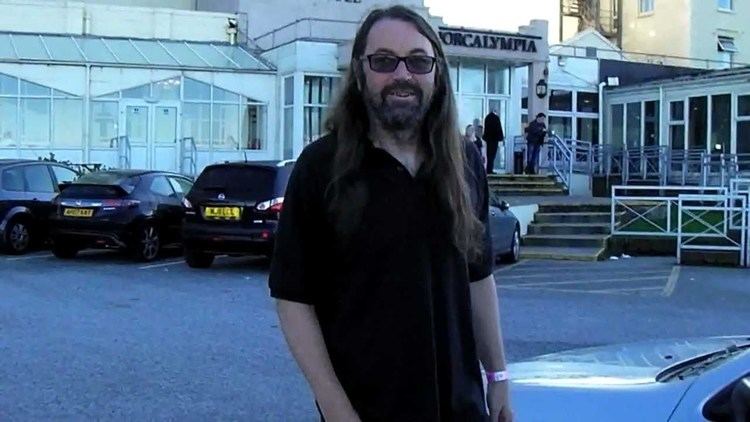Other names Yak Role Video Game Designer Employer Llamasoft (founder) | Website www.llamasoft.co.uk Name Jeff Minter | |
 | ||
Occupation programmer, game designer Video games Similar People Eugene Jarvis, Archer MacLean, Danielle Bunten Berry, Jon Hare, Chris Crawford | ||
New gameplay video from txk from jeff minter ps vita alpha build
Jeff "Yak" Minter (born in 22 April 1962 in Reading) is an independent English video game designer and programmer. He is the founder of software house Llamasoft and has created dozens of games during his career. Minter's games are often arcade style shoot 'em ups which contain titular or in-game references demonstrating his fondness of ruminants (llamas, sheep, camels, etc.). Many of his programs also feature something of a psychedelic element, as in some of the earliest "light synthesizer" programs including his Trip-a-Tron.
Contents
- New gameplay video from txk from jeff minter ps vita alpha build
- Play blackpool 2015 walkaround interviews oliver twins jim bagley jeff minter david rowe
- Pre commercial career early years
- Commercial 8 bit games
- Post 8 bit work
- The Minotaur Project
- Return to console games
- Personal life
- Games
- References

Minter's works include Neon (2004), a music visualisation program built into the Xbox 360 console, and the video games Gridrunner, Tempest 2000, Space Giraffe (Xbox Live Arcade, 2007 and PC, 2008), and GoatUp (iOS 2011).

Play blackpool 2015 walkaround interviews oliver twins jim bagley jeff minter david rowe
Pre-commercial career (early years)

Minter had expressed an interest in programming computers from a young age. He wrote the game Deflex for the Commodore PET in 1979. However it would not be until a long illness during the school year that Minter's talents would develop in any meaningful way. Following a three-month stint in which Minter was restricted to lying on his back and was confined to his bed between November 1981 and January 1982, boredom led him to take up computer programming in earnest to pass the time.

Upon recovery, Minter teamed up with Richard Jones, a fellow pupil, and together they started writing their own games on their school's Commodore PET. They soon parted ways. Jones went on to commercial projects, some of them in the software market (e.g., Interceptor Micros).
Commercial 8-bit games
In 1981 Minter started independently writing and selling video games for the Sinclair ZX80, the first machine he owned. Some were made for software company dk'tronics. These titles were sold as a package but this was not available for very long, as Minter left the company following a royalties dispute. He formed a partnership with his mother, Hazel Minter. Together they developed and commercially produced 20 games for the Sinclair ZX81, Commodore VIC-20, Atari 8-bit computers, ZX Spectrum and Commodore 64. Having been studying physics at the University of East Anglia, success in the programming industry prompted him to drop his studies and take up video game development full-time.
The following year, he founded the software house Llamasoft. His first Llamasoft game was a Defender clone for the Commodore VIC-20 called Andes Attack (US version: Aggressor). In Andes Attack, little llamas advanced upon and attacked the player instead of the spaceships from Defender. As a fan of Defender, Minter would remake it again as Defender 2000. Through the Brighton-based software house, Salamander Software, Minter had his games written for the Spectrum and other home microcomputers. It was Mr S.A. Tenquist who was responsible for the Sinclair ZX Spectrum 16K version of Gridrunner. The conversion was released and published for Christmas 1983 by Quicksilva Ltd., UK. Jeff Minter's original Commodore version was written in a week and marked his first commercial success both in the UK and in the US.
Minter went on to develop a number of classic games, all written in assembly language, for the later home computers (such as the Commodore 64, Atari 400/800 and Atari ST) which were marketed mainly by word of mouth and by the occasional magazine advertisement. These games included: Gridrunner, Abductor, Matrix: Gridrunner 2, Hellgate, Hover Bovver, Attack of the Mutant Camels, Revenge of the Mutant Camels, Return of the Mutant Camels, Laser Zone, Mama Llama, Metagalactic Llamas Battle at the Edge of Time, Sheep in Space, Voidrunner, and Iridis Alpha.
Post 8-bit work
In 1989, Minter helped in the production of the Konix Multisystem console.
Minter also worked for Atari and VM Labs. For Atari he produced Tempest 2000 (1994) on the Jaguar. It was a remake of Dave Theurer's 1981 classic, Tempest. Minter also produced Defender 2000 (1995) on the Jaguar, remaking Eugene Jarvis's 1980 classic, Defender. Listing Minter in their "75 Most Important People in the Games Industry of 1995", Next Generation called him the Jaguar's "leading developer". Minter also produced the Virtual Light Machine (VLM-1) for the Jaguar CD add-on. For VM Labs, Minter designed related software for the Nuon chip including the creation of the VLM-2 Light Synth and the video game, Tempest 3000.
Minter then wrote games for the Pocket PC platform, some of which also had PC conversions (using a customised Pocket PC emulator). During this time, Minter released three games: Deflex, Hover Bovver 2: Grand Theft Flymo (a reinterpretation of his own 1984 game, Hover Bovver), and the PC/Macintosh game Gridrunner++ (the third title in the Gridrunner series).
In 2002, he began work on a music video game for the Nintendo GameCube to be called Unity. Using the newest version of his VLM, the VLM-3 or Neon, Unity was to combine the two main threads of Minter's prior career: light synthesis and classic arcade style shooting. Minter was involved in writing this game for Peter Molyneux's Lionhead Studios throughout 2003; however, the project was cancelled in December 2004. Neon has since been reprogrammed and significantly expanded and is used in Xbox 360 media visualisation.
In 2007 Minter released Space Giraffe, an action video game with similarities to Tempest. Space Giraffe was released for Xbox 360 through Xbox Live Arcade for 400 Microsoft Points, or US$5.
In 2008 it was announced at the Tokyo Game Show that designers at Llamasoft were working on the visualisation aspects of the Xbox 360 version of Space Invaders, called Space Invaders Extreme. The game was released in 2008. In December 2008 Space Giraffe was released for the PC.
In September 2009 he released Gridrunner Revolution for Windows-based PCs as a digital download.
The Minotaur Project
In 2010, frustrated with the delays surrounding the release of his titles, Minter was keen to return to a style of game development where games could be produced and released quickly. The iOS platform was chosen and Llamasoft announced that a series of games would be produced under the banner The Minotaur Project. The idea behind the series is that Llamasoft would develop a game in the style of an old piece of hardware but without the constraints of the original hardware.
On 5 January 2011 he released Minotaur Rescue for iPhone 3GS, iPhone 4, iPod touch (3rd generation), iPod touch (4th generation), and iPad.
On 2 March 2011 Llamasoft released their second iOS game, Minotron: 2112. Minotron: 2112 is a remake of the Atari ST / Amiga game Llamatron (which was inspired by the coin-op video game Robotron: 2084). An iOS version of Deflex was also released although this was not specifically labeled as being part of the Minotaur Project.
On 17 September 2011, Llamasoft released GoatUp, their first platform game.
On 27 January 2012 Caverns of Minos was released followed on 24 March by Gridrunner iOS.
Super Ox Wars, a shoot-em-up based on Ikaruga, was released in July 2012; the final game in the series, GoatUp 2 was released in March 2013, unique in that it is the only Llamasoft title to feature a level editor. Minter then announced his intention to abandon mobile development due to lack of discoverability, low turnover, and the dominance of free-to-play and video game clones; he ultimately declared that, after accounting for his time, the Minotaur Project made a net loss. Minter stated on Twitter than "Returning to iOS would be like returning to the scene of a mugging" and "I would advise any dev valuing integrity and sanity to just get the hell out".
The code framework for the Minotaur Project games enables them to be rebuilt for both Mac and PC versions. Gridrunner was released for the Mac in August 2012.
Return to console games
In April 2013 it was announced that Llamasoft had signed a deal with Sony Computer Entertainment to create a tube shooter for the PlayStation Vita called TxK. The game would be Llamasoft's fourth tube shooter in two decades and was described as the spiritual successor of 1994's Tempest 2000 for the Atari Jaguar. As Minter explained in his development blog the project goals were to create a more traditional, straightforward and accessible tube shooter than Space Giraffe, to improve on the flaws from Tempest 2000 and Tempest 3000, and to evoke the neo-retro aesthetic without being cheesy. TxK was released on February 11, 2014, by digital download through PSN.
At the beginning of 2015, Minter was threatened with legal action by Atari, claiming that TxK was too similar to Tempest 2000 - a game that Minter himself wrote, but Atari owned the rights to. This raised several issues, including Atari claiming that Minter that had illegally copied material from his own source code and violated design copyrights on his own design traditions. Sony was unwilling to support Minter and as such future versions of TxK were blocked from release, although the PS Vita version remains available.
Minter and Zorzin's first publically available game for a modern home console, Polybius, was released on the PlayStation 4 on the 9 May 2017. The game features extensive support for the Playstation VR headset, based on Minter's experience building the unreleased VR version of TxK. Shortly after release, Llamasoft were contacted by Trent Reznor of the band Nine Inch Nails, asking to use visuals from Polybius as the basis for the music video for the song "Less Than"; the video was released on 13 July the same year.
Personal life
In online forums and informal game credits pages Minter usually signs as "Yak", which is, in his own words
"a pseudonym chosen a long time ago, back in the days when high score tables on coin-op machines only held three letters, and I settled on Yak because the yak is a scruffy hairy beast – a lot like me ;-)."
Since 2015, Minter has used the name "Yak" relatively rarely, usually signing as "Stinky Ox" or "Jeff Minotaur".
He lives in Wales with his partner Ivan "Giles" Zorzin, four sheep, two goats, two llamas and a dog. Although Minter is synonymous with Llamasoft, Zorzin is jointly responsible for the recent titles.
Games
Fourth generation games
Minotaur Project series: This series of games pay homage to classic retro platforms. Each game is implemented as if running on a modernised version of the classic platform it represents. Originally developed for the iOS platform the games are being ported to both OS X and Android.
